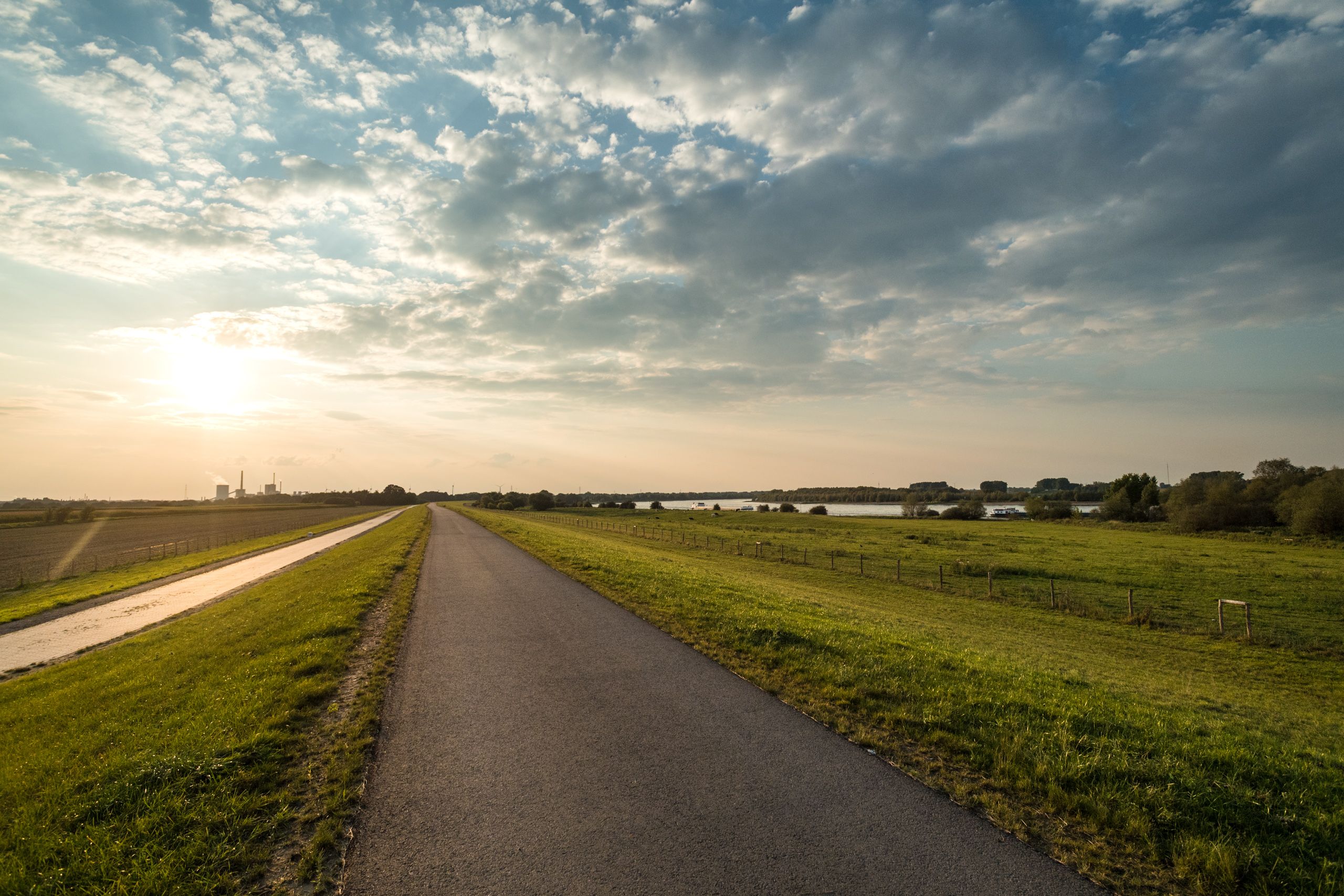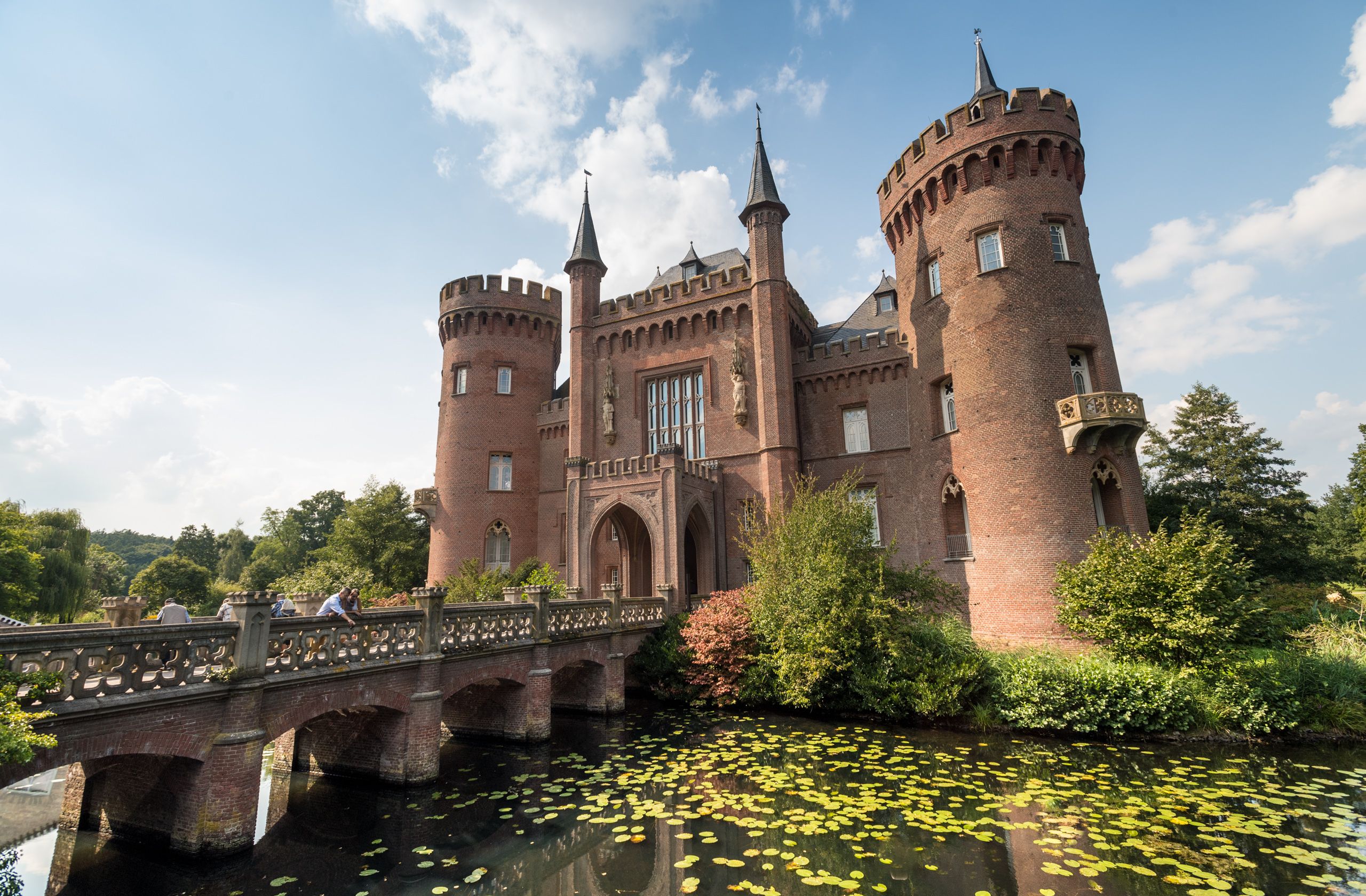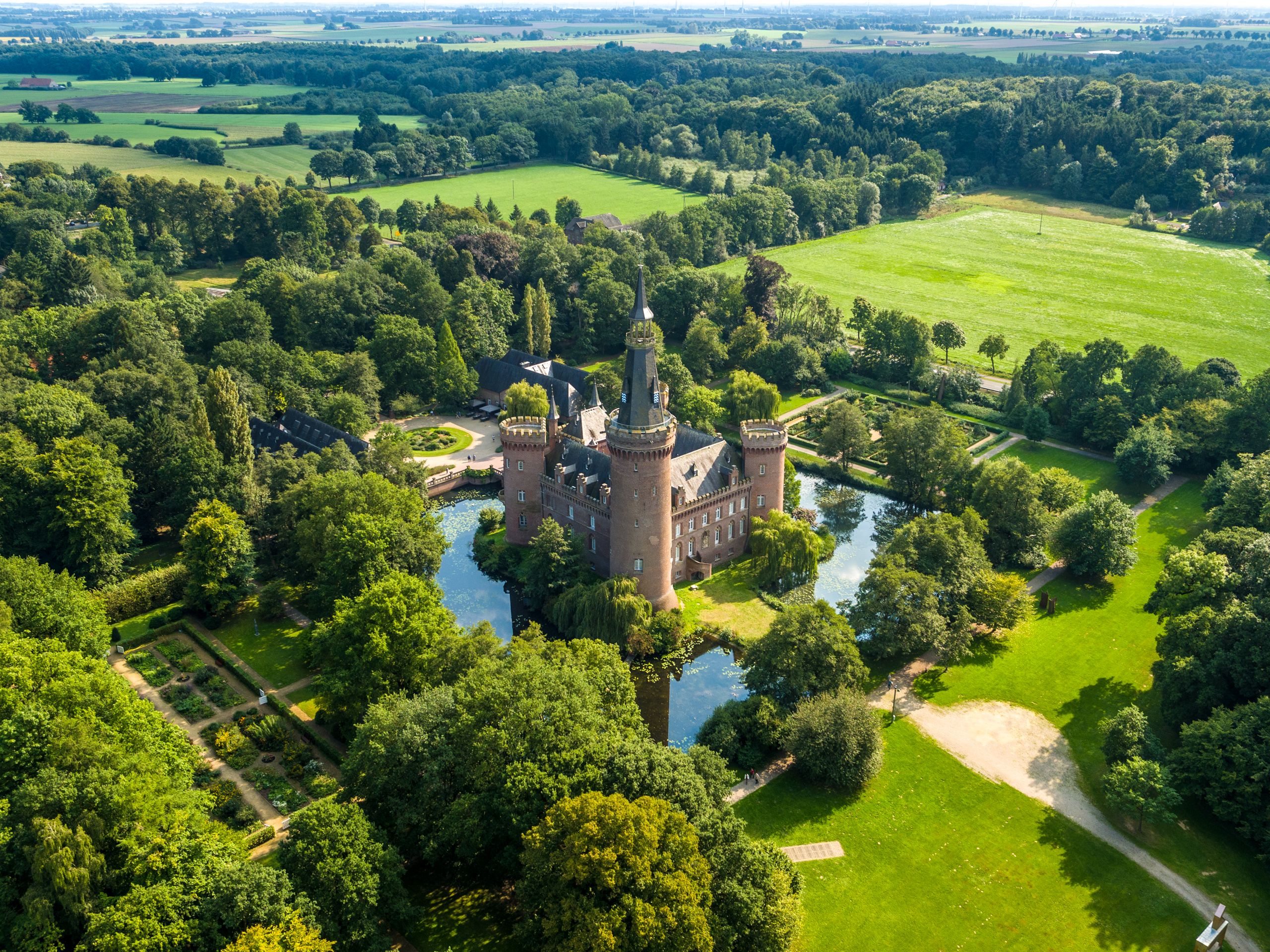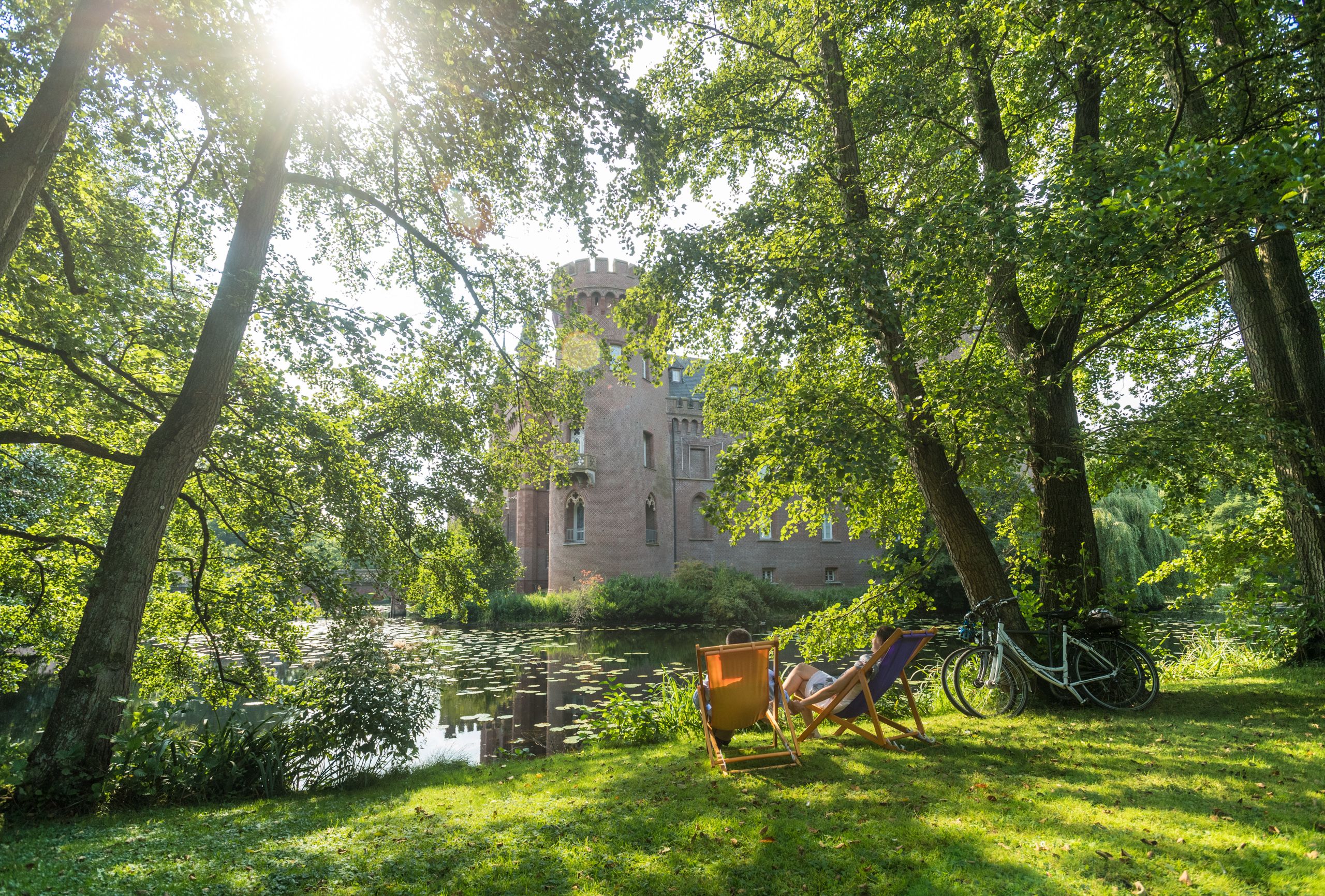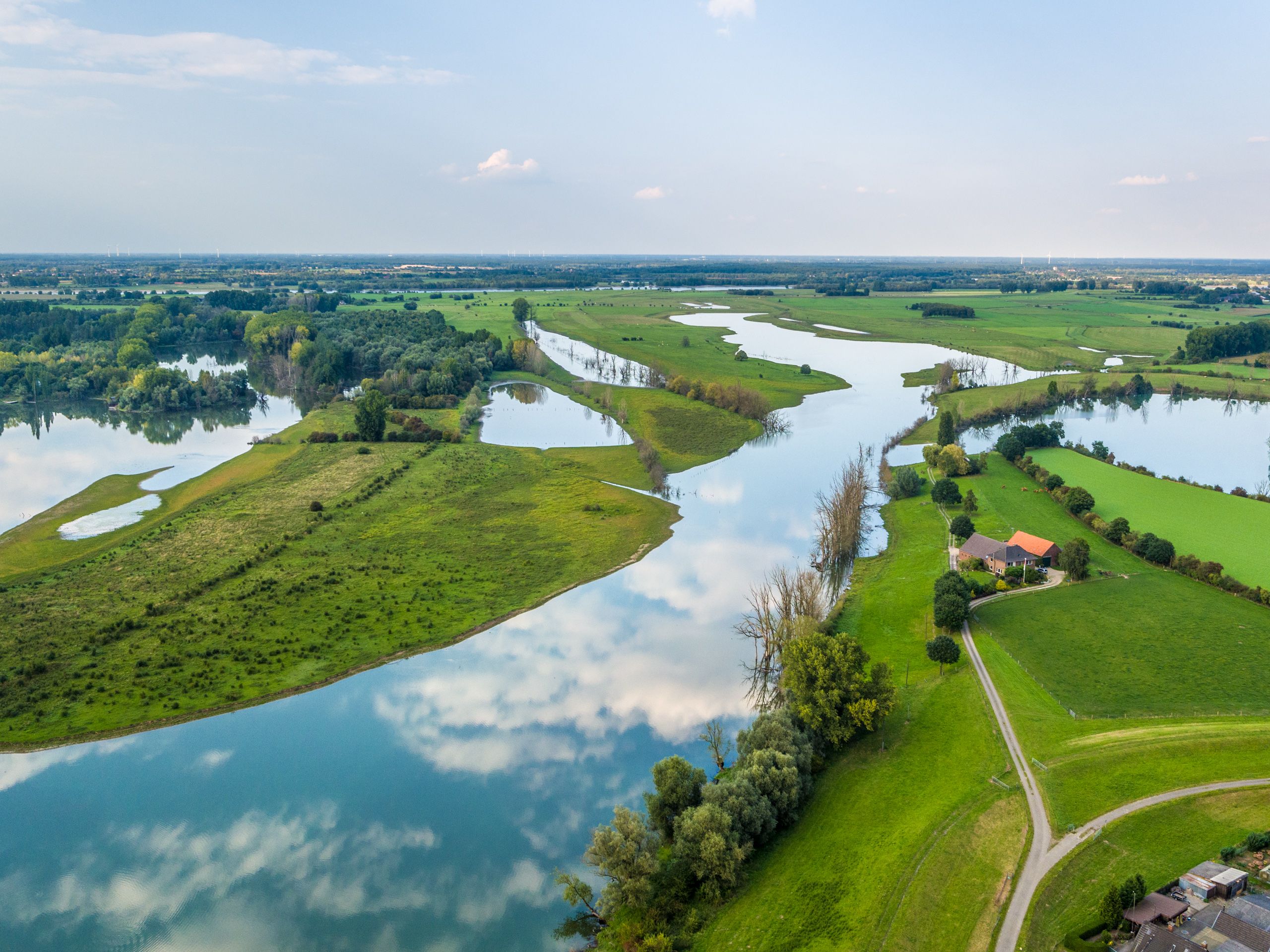Wide fields and green floodplains dominate the landscape on the lower Lower Rhine, with no mountains to shorten the view to the horizon. Yes, the Lower Rhine is flat, but only from a geographical perspective. Even though there are no natural elevations worth mentioning, the landscape to the right and left of the Rhine has plenty to offer cyclists in particular: With over 2,000 kilometers of the Niederrheinroute, the region has the longest network of signposted cycle paths in Germany. Once a year, the region is a hive of activity: on the first Sunday in July, the "Lower Rhine Cycling Day" takes place, which is the largest cycling event in Germany.
Between Wesel and Xanten, cyclists come across a very special piece of nature: Rare animals and plants live in the Bislicher Insel nature reserve, which is surrounded by the Rhine. Around 1,000 hectares of floodplain have been created here by a dyke on the Rhine far from the river, making it one of the last floodplain landscapes in Germany. The Bislicher Insel Nature Forum has a permanent exhibition on the history of the floodplains and offers a broad environmental education program with seminars, films, lectures and excursions. The ferry "Keer tröch II" departs from the small but pretty village of Bislich, taking cyclists and hikers across the river to Xanten.
Travel back in time to the Roman Colonia Ulpia Traiana
The Romans liked it here so much 2000 years ago that they settled here and founded what is now Xanten. In the Xanten Archaeological Park, the remains of the Colonia Ulpia Traiana invite you to take a trip back to antiquity. Amphitheatres, harbour temples, craftsmen's houses and other reconstructions give a vivid impression of everyday life 2000 years ago. A Roman playhouse and an adventure and water playground are particularly interesting for children. Touching and trying things out is also allowed in the LVR-RömerMuseum, which takes visitors on an exciting journey of discovery through Roman history. The museum building alone is impressive: the 20-metre-high building is similar in size to the former entrance hall of the ancient thermal baths.
The town centre of the state-approved climatic health resort is not antique, but historically impressive. There are many pretty, late Gothic town houses from the second half of the 15th century around the Gothic St. Viktor Cathedral. The Klever Tor, a remnant of the medieval town wall, is still well preserved.
Just a little further down the Rhine, the small town of Kalkar offers the next worthwhile stop: with its market square paved with Rhine pebbles, an almost 500-year-old lime tree, alleyways and footbridges and Gothic houses, it transports visitors back in time. Stepped gabled houses, decorative facades, the view of St. Nicolai and the late Gothic town hall with its belfry and battlements are among the highlights of the historic old town. The windmill at Hanselaertor is a great place to take a break: Fresh bread is baked here and mill beer is brewed.
Opposite, on the other side of the river and directly on the banks, is the small town of Rees with its beautiful Rhine promenade, thick 700-year-old town wall and historic town center. In addition to museums, cafés and restaurants, there is plenty of history to discover. For example, the underground Kassematten, which can be visited on guided tours, is one of the best-preserved medieval fortifications in the Rhineland. Various ferry connections make it possible to cross the Rhine either directly at the level of the city center or a little further downstream.
On the left bank of the Rhine, in Bedburg-Hau, the imposing Moyland Castle rises up. This stop is a must on the route, especially for those interested in culture. 6,000 works by Joseph Beuys can be found here - the largest collection in the world. Beuys is one of the most important artists of the 20th century - born in Krefeld, the action artist, sculptor and draughtsman was also a professor at the art academy in Düsselorf.
View of Germany's longest suspension bridge in Emmerich
Cyclists can use the ferry connection from Grieth to Grietherort to change sides of the Rhine at river kilometer 844. The route then continues on the right bank of the Rhine towards Emmerich, where a particularly beautiful Rhine promenade invites you to take your next break. Park your bike, take a stroll and sit in one of the many cafés and restaurants and watch the ships go by - it's relaxing and recharges your batteries. From here, visitors not only have a view of the river, which is particularly impressive at this point, but also of an impressive structure: at 803 meters, the Emmerich Rhine Bridge is the longest suspension bridge in Germany. On the other side is the small town of Kleve, whose skyline is dominated by the Schwanenburg castle. The Schwanenturm offers an impressive panorama across the Rhine plain as far as the Netherlands.
